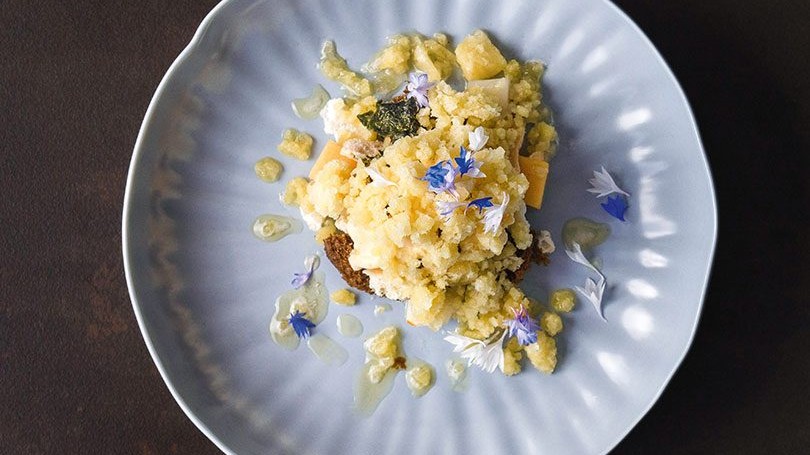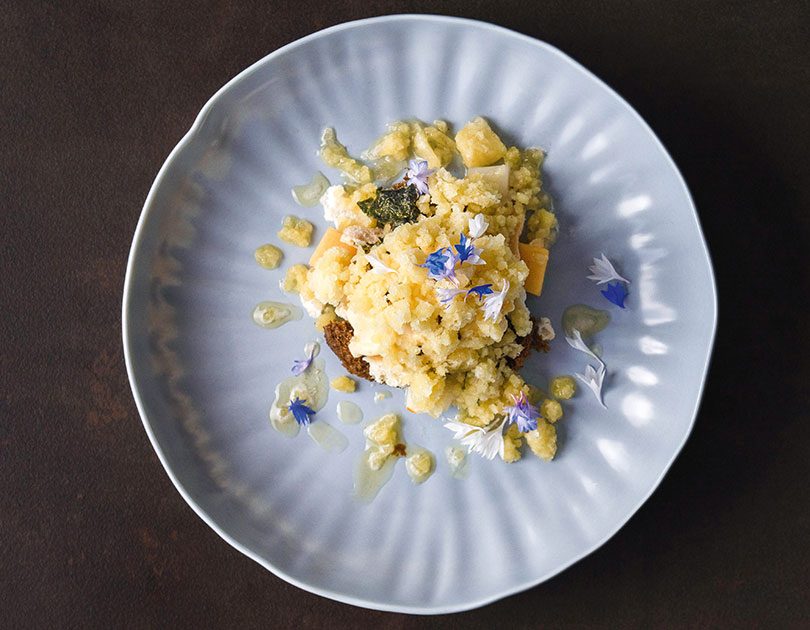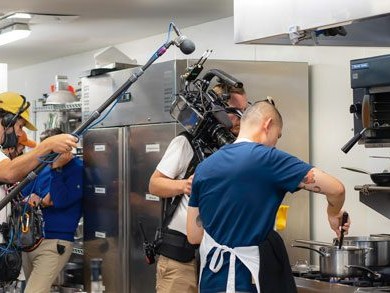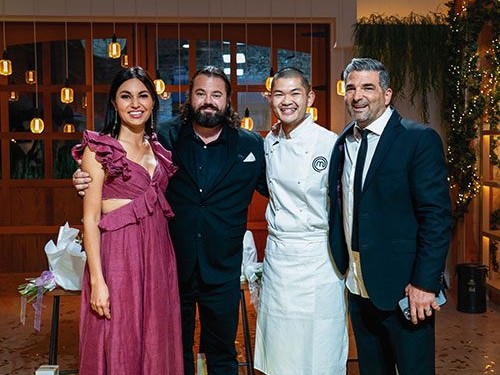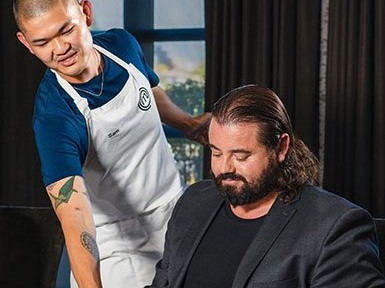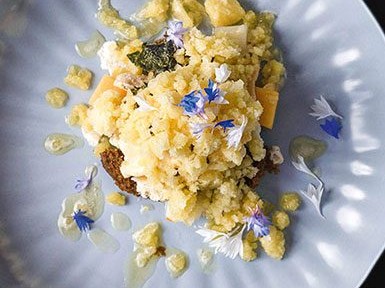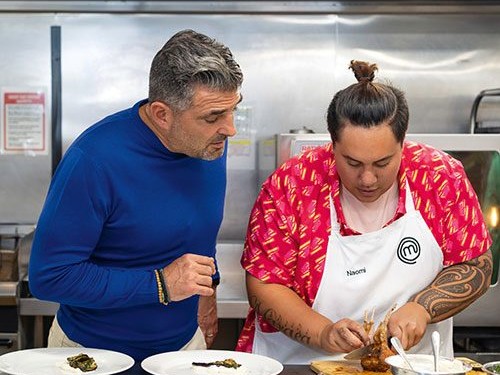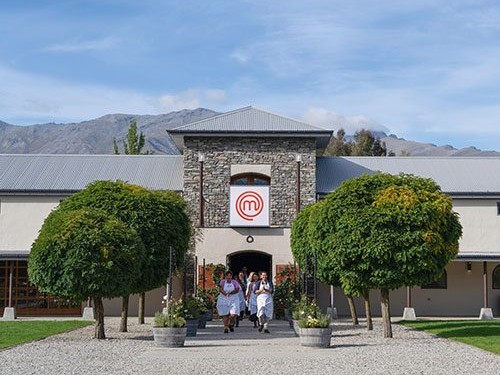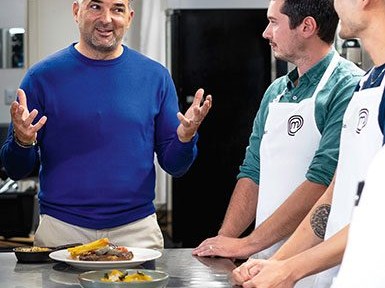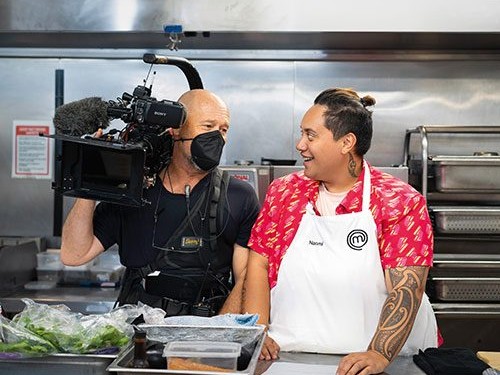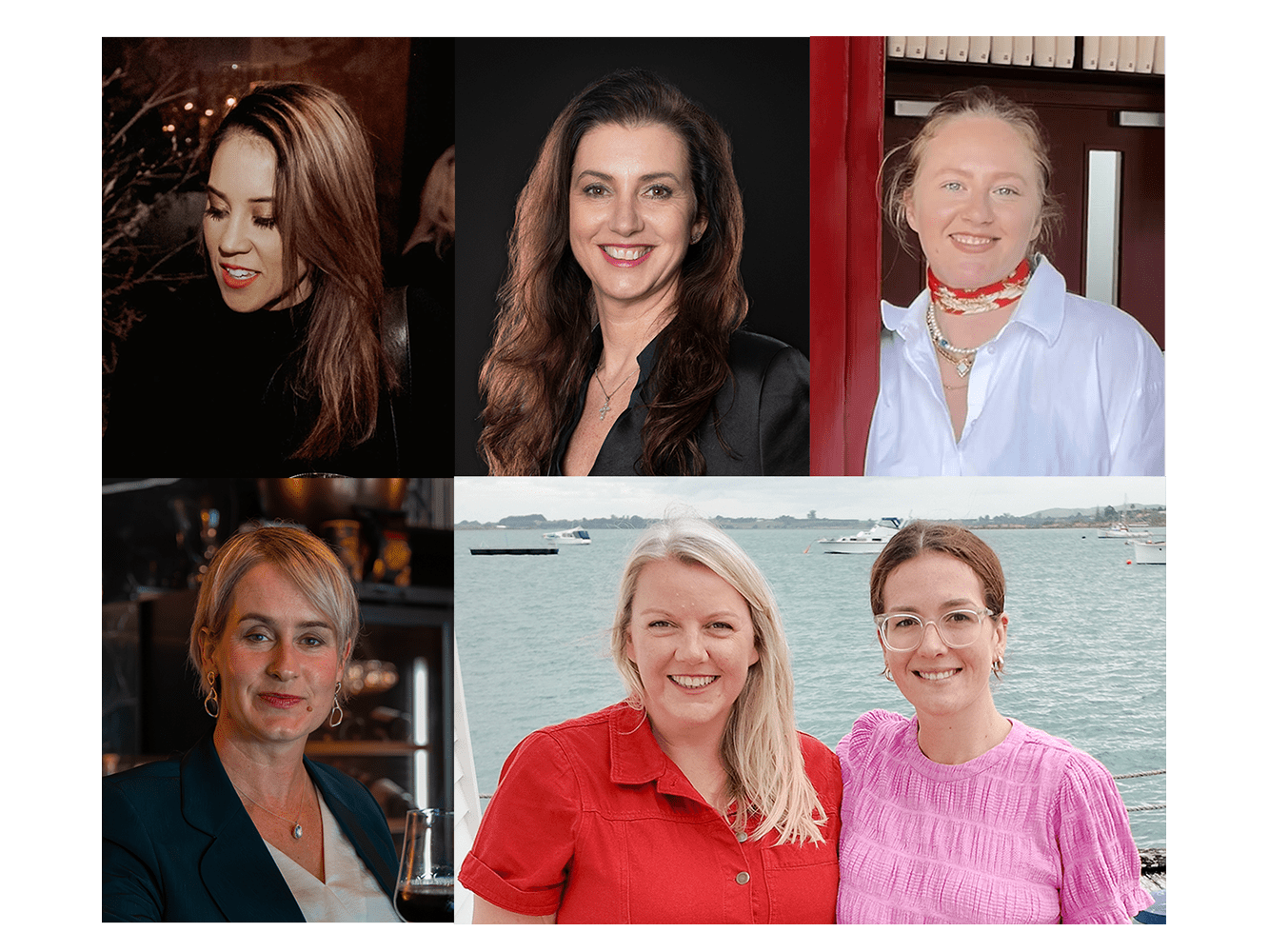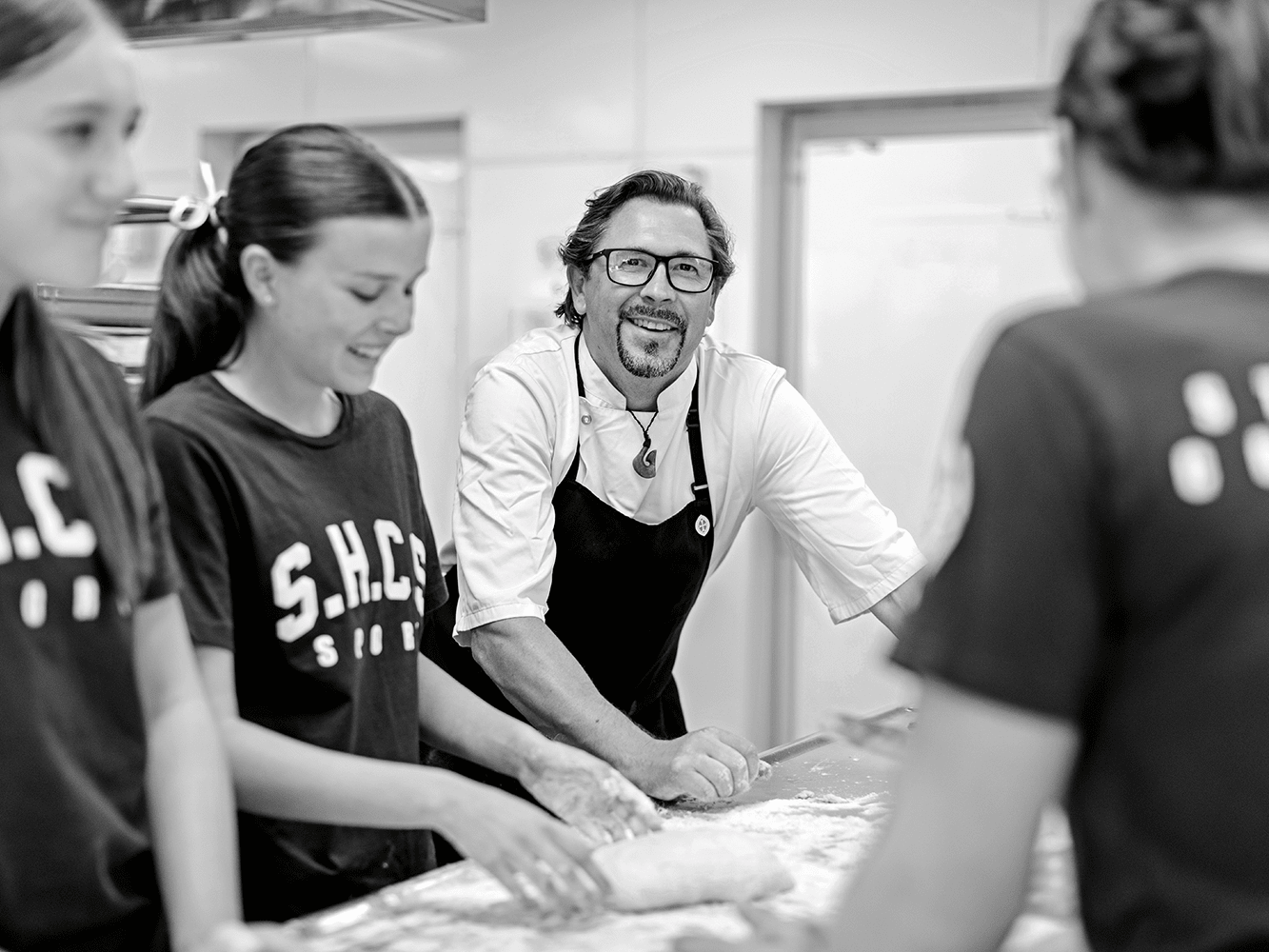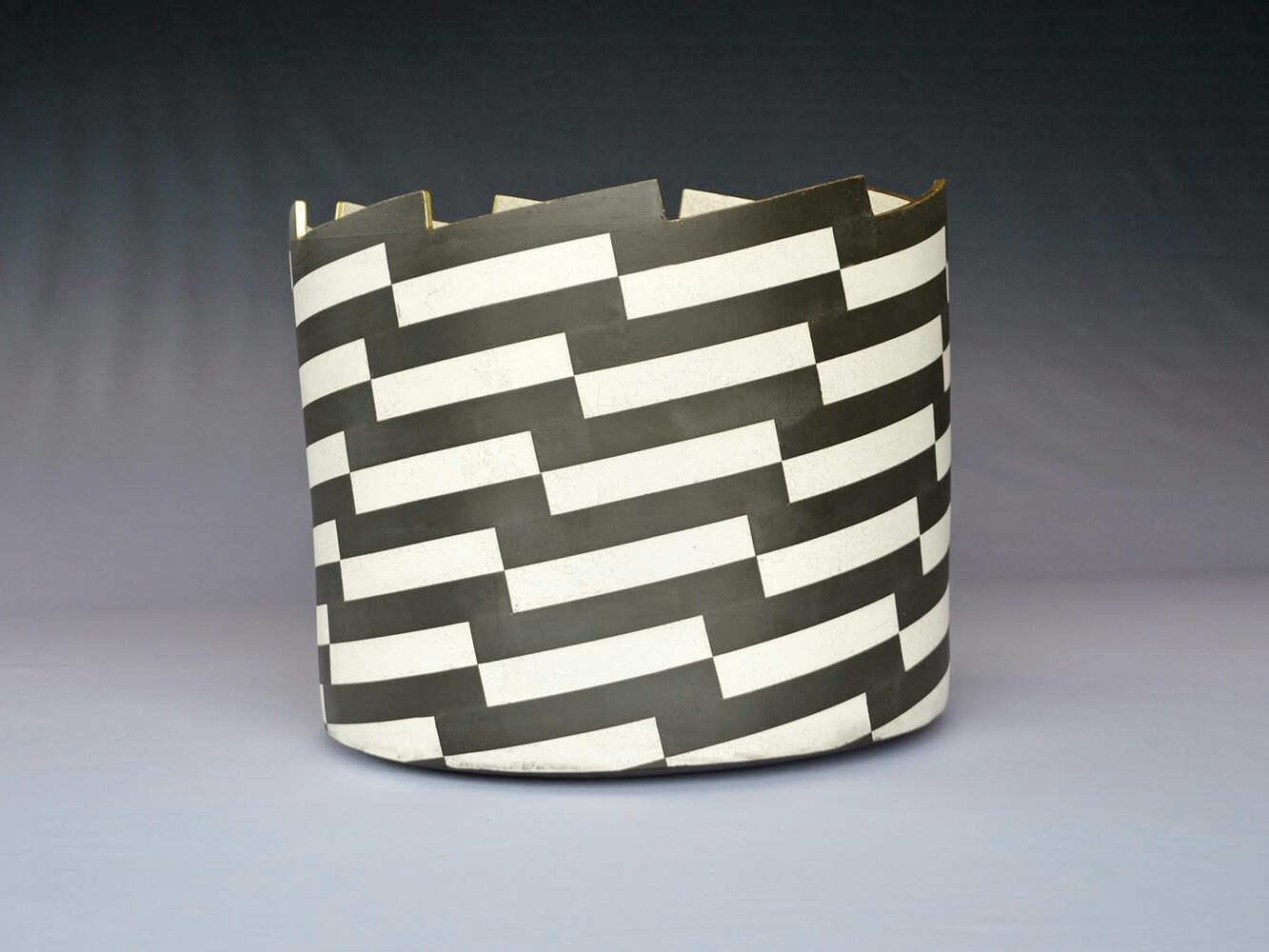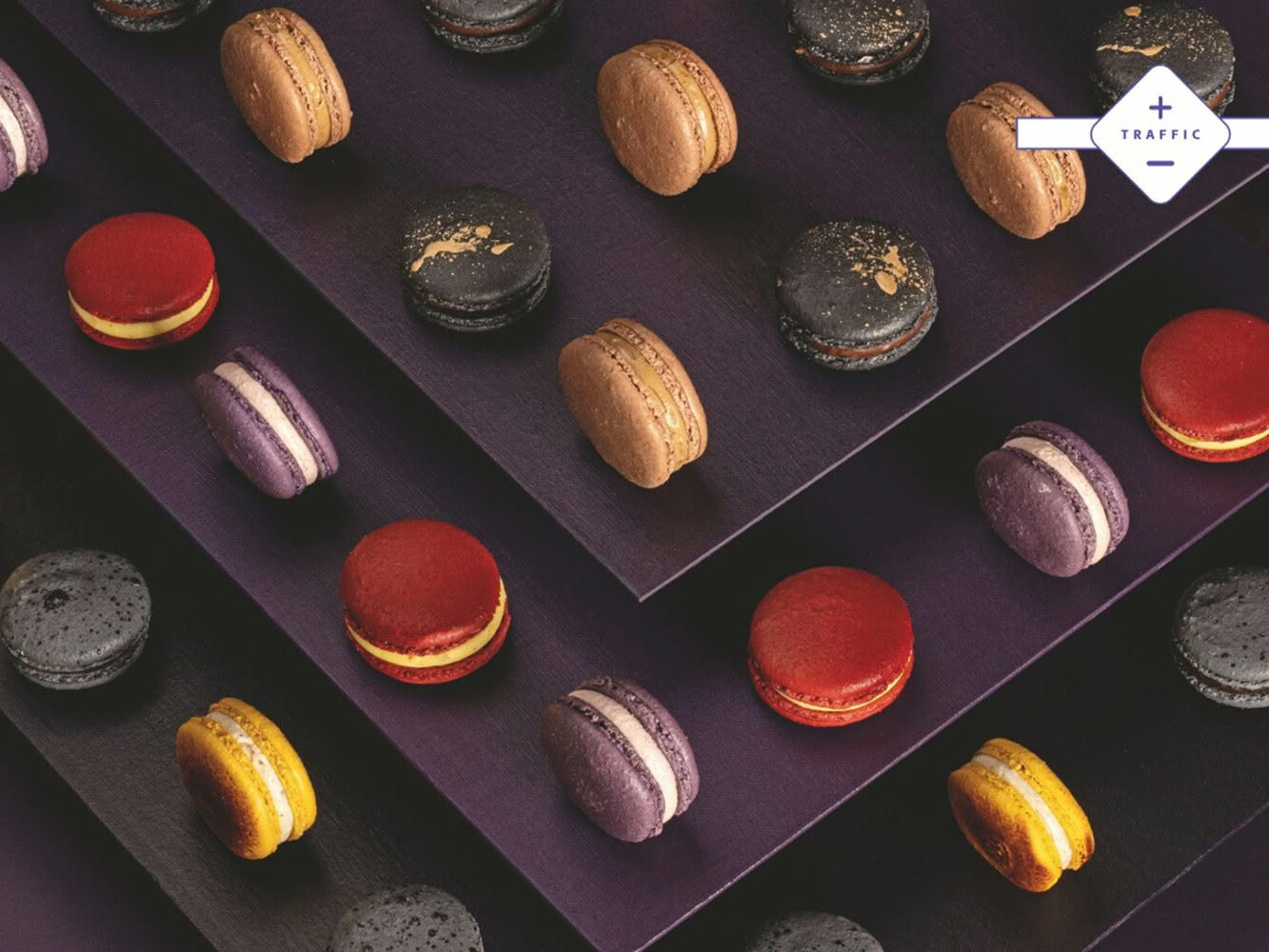Kelli Brett takes us behind the scenes of our favourite show.
As I’m writing this Sam Low, our lovable barista, has claimed the title of 2022 MasterChef New Zealand with his three-course menu of pāua congee, steamed blue cod and a sea dessert. Now we wait for the wakame dust to settle and to hear if there will indeed be an attempt at producing a MasterChef New Zealand for 2023.
As the Aussie version on TVNZ2 went head-to-head with the New Zealand version on Three the inevitable cultural comparisons began, with the major bones of contention circling around budget and production values. Perhaps we need to consider more carefully the opportunity that the New Zealand version of this (now iconic) cooking competition brings to our table?
The show was first developed for the BBC in 1990, but my first MasterChef encounter was the revamp in 2005 with new judges John Torode and Gregg Wallace and I was well and truly hooked. In April 2009, I watched along with 1,428,000 Aussies as the very first auditions for MasterChef Australia were aired. I’m a fan to this day, and my son still looks down on me if his al dente spaghetti is not swirled into a stylish nest. So I was thrilled to hear that MasterChef New Zealand was making a return to our screens after a six-year hiatus – and then came an invitation to be a guest judge in episode 16.
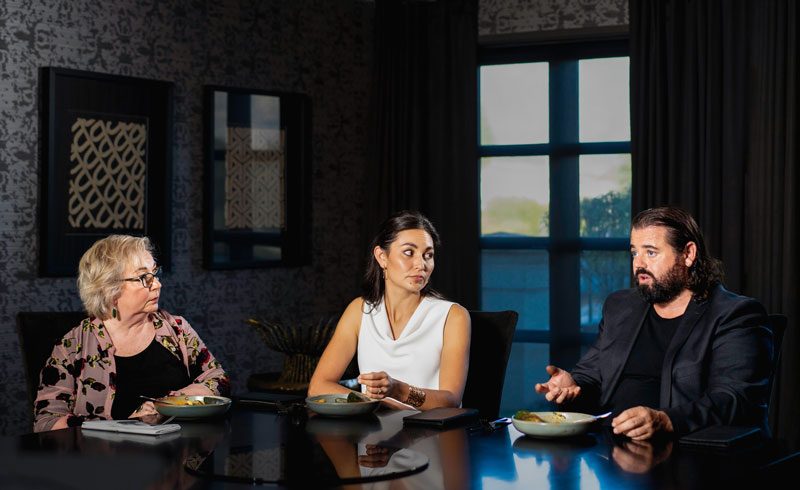
As the contestants were challenged to master the room-service menu at the Sofitel in Queenstown, I was as excited as a Cloudy Bay clam at high water. Judging food in the VIP suite of a luxury hotel was an opportunity to get a look behind the scenes at the making of a phenomenal series that has versions in over 60 territories worldwide. It’s fair to say that it has become the most travelled food format in the world.
So why are we quibbling about it? There is no question that the Aussie version is supported by a budget that is justified by the whopping audience of 1.22 million that tuned in to the live stream of the MasterChef Australia finale on 12 July 2022. Social engagement for the series saw impressions exceed 426 million, and yes, understandably, in comparison the numbers for New Zealand will look small. Unfortunately, my request for our national viewing statistics, and any insights that might be shared, was met with the following comment from an unnamed executive at broadcast network Warner Bros. Discovery. “We’re delighted to have brought MasterChef back to New Zealand screens and we’re pleased that Kiwis have taken to the show like they have.” A bit of a missed opportunity to celebrate all that your outstanding team has achieved if you ask me Warner Bros. Discovery, but any hoodles…
The return of the New Zealand series had a strong start with a powerful trailer that introduced three exciting new judges: ex-MasterChef winner and much-loved food entrepreneur Nadia Lim, and Cuisine Good Food Award-winning hospitality stars Vaughan Mabee and Michael Dearth. It showcased an inspiringly diverse bunch of hungry and bright-eyed contestants and the opening shots of stunning landscapes and a blue-sky boat ride to Walter Peak were glorious. However, the grim reality of an old and sterile industrial kitchen background and difficult lighting scenarios began to dampen the enthusiasm. The judges felt a little awkward and, I’ll admit, I was feeling awkward for them.
Fast-forward through the original 27 hopefuls being excruciatingly whittled down to 14, and with the relocation to the official (albeit small) MasterChef kitchen, we start to see some programme elements and ingredients that are unmistakably Aotearoa. Yes, we’d like a bigger kitchen. Yes, we’d like more teachable moments and masterclasses. Given the constraints of a pandemic, it’s understandable that guest appearances were thin on the ground (and speaking of thin, let me note that it is just plain cruel to seat me, a woman of a certain age who eats for a living, next to Nadia Lim) – but the finale would have been more of a true Kiwi celebration with the addition of some guests. And wouldn’t it be great (budget-permitting) to see some money up for grabs in the winner’s prize?
All of the whingeing aside, I was in it to the very end and, judging by most of the social media commentary, so were most of you. Thrilled at each light-bulb moment, cheering at each step forward and teary at each goodbye (well, not all, but most). The judges won my heart and I can tell you that they take their responsibilities extremely seriously.
No one does casual better than New Zealand, and we have an opportunity here to drill down into our smart-casual food culture and produce something way more authentic than our gimmick-obsessed mates across the ditch. At the end of the day we need MasterChef New Zealand to succeed. It will not only help us to tell our food stories on a global stage, it could – with more thought – also help our own New Zealand audience understand the true value proposition of our food: on our farms; from our artisan producers; in our home kitchens; in our restaurants; and on our supermarket shelves, all the while unearthing some of the country’s valuable and culturally diverse new food talent. I think, budget-permitting, that’s a programme worth fighting for…
SEE MORE FROM CUISINE
Inspirational Women in Food & Drink
New Zealand’s food-and-drink industry is filled with hardworking and…
We’ve Noticed…. Marcus Verberne
Cooking skills open up a world of different opportunities. From fine…
Design File / Mark Mitchell / Ceramic artist / Northland
In his Northland studio, Mark Mitchell crafts ceramic pieces that use…

